Just because the weather is turning and the primary growing season is ending does not mean that you cannot enjoy fall vegetables. There is nothing more satisfying than picking your own vegetables from the garden and eating them. Furthermore, with a little forward-thinking, you may extend the growing season much further than you thought.
Gardening is a pastime that many of us have discovered during this strange year. With the terrible stress of lockdowns and a world in turmoil, gardening has helped many of us endure these weird times. Maybe you have discovered the joy of growing vegetables, and you would like to know what types of fall vegetables to grow in your late-season garden.
Fall Vegetables
A variety of fantastic vegetables lay at your fingertips this fall, and you may continue growing veg well after the primary season is over. The fall offers shorter days, which also tend to be cooler. Therefore, you will find a whole host of possibilities for fall vegetables to grow.
As the hot, hazy days fade, tender tomatoes, leafy greens, root vegetables, and cabbages may thrive in fall conditions. Broccoli and kale may easily adorn your dinner plates, and even eggplants may gift you with their delicious purple offerings. Fall vegetables offer a comprehensive and tasty choice of harvests to prolong your gardening and eating pleasure.
RECOMMENDED READ: Guide to Root Cellar Storage
Start Planning Your Fall Vegetables
It is essential to consider that when the frosts hit, most of the tender plants, including vegetables, will die away in our gardens. Therefore, it remains vital to begin planning your crop of fall vegetables mid-way through the summer months. Remember that plants need to establish themselves and mature before they may yield their gifts.
Summer extension
Growing fall vegetables is really the act of extending your summer crops by something called succession planting.
Succession planting refers to the practice of sowing or planting one crop immediately after an earlier crop has finished. Succession planting allows for a continuous harvest, one after another.
Stagger those plants
Fall vegetables may form the same crops as you grew in the summer. Therefore you aim to replace the spent plants with new ones to prolong the growing season. Vegetable plants tend to lose their vitality after their initial, heavy crop. Therefore, have your plants at the ready to replace them after the first couple of harvests.
For instance, once you have planted your beans in the garden, grow a second batch in pots a couple of weeks later. This means that your new plants will be ready to plant into the vegetable plot once the original plants have passed their best.
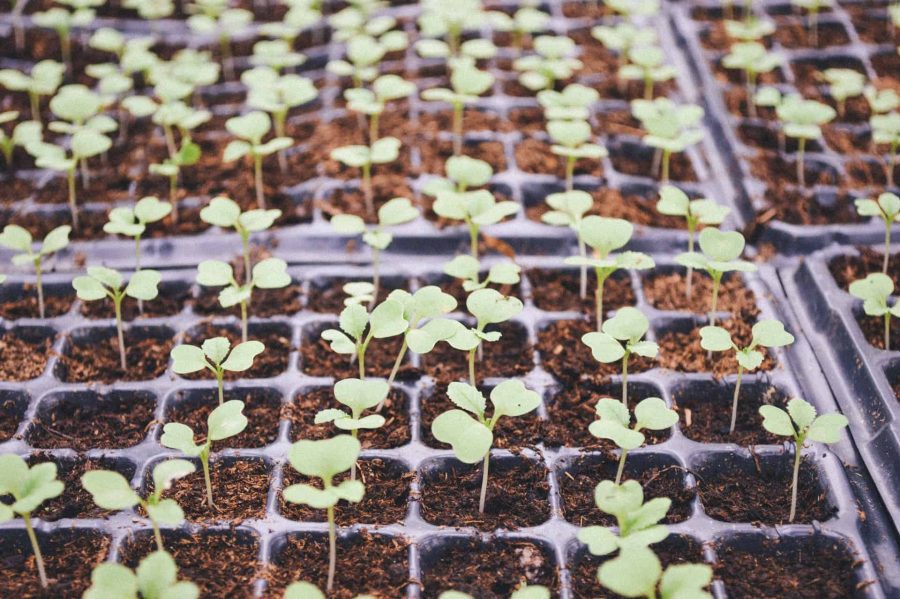
To seed or not to seed
Some seeds thrive in the ground, especially in the colder weather, and make for the perfect fall vegetables. Alternatively, if in doubt, plant your seeds into trays and pots and bring them on before you plant them directly into the ground.
Starting seeds off in pots is a fantastic way to increase your yield. It allows the plants in the garden to fully mature and complete their cycle while you have a new batch at hand ready to go.
- Quantity 10 - Durable Plastic - NO Drain Holes
- Perfect for use as a drip tray, hydroponic growing and seed starting
- Approx: 21" by 11" (top measurement). 20" by 10" bottom of tray - See product description below for precise measurments
- EASIER SEED STARTING: Our Burpee SuperSeed tray with 36 flexible pop-out cells is designed to simplify indoor seed...
- SMARTER WATERING SYSTEM: Molded corner slots in each cell improve drainage and soil aeration to set your seeds up for...
- SIMPLER TRANSPLANTING: Soft food-grade silicone cells cradle seedlings and gently flex to pop out when it’s time to...
Store-bought plants
If you don’t get your seedling started in time, then a visit to the local garden center may solve such a problem. You may find a selection of fall vegetables from which to choose in handy seedling form. Consequently, you may arm yourself with a host of crops ready to plant in your garden.
Handy Tips for Growing Fall Vegetables
Once you have decided to prolong the potential of your garden, it is worth noting a few things when planning your fall vegetables.
Planting seeds direct into the garden
Planting seeds directly into your garden is called direct seeding. Furthermore, you need to ensure you choose varieties of vegetables that mature in the shortest length of time for this method. Seeds planted directly into the ground will take longer to develop than those varieties grown in advance in trays.
Planting depth
The ground may feel warmer in the fall, and seeds do better when planted into cool, moist soil. Therefore, plant your seeds a little deeper than it suggests on the packet to reach the cooler levels.
Established seedlings
Plants grown in pots and trays will fare better when transplanted into the ground. After a good watering, the young plants will handle temperature fluctuations far better than emerging seedlings.
Pelleted seeds
Some seeds, such as carrots, may come in the form of pellets, whereby the seed is coated with a layer of clay. Such seeds will maintain their moisture levels better than the uncoated variety and may prove a better option for direct seeding. However, they take longer to germinate.
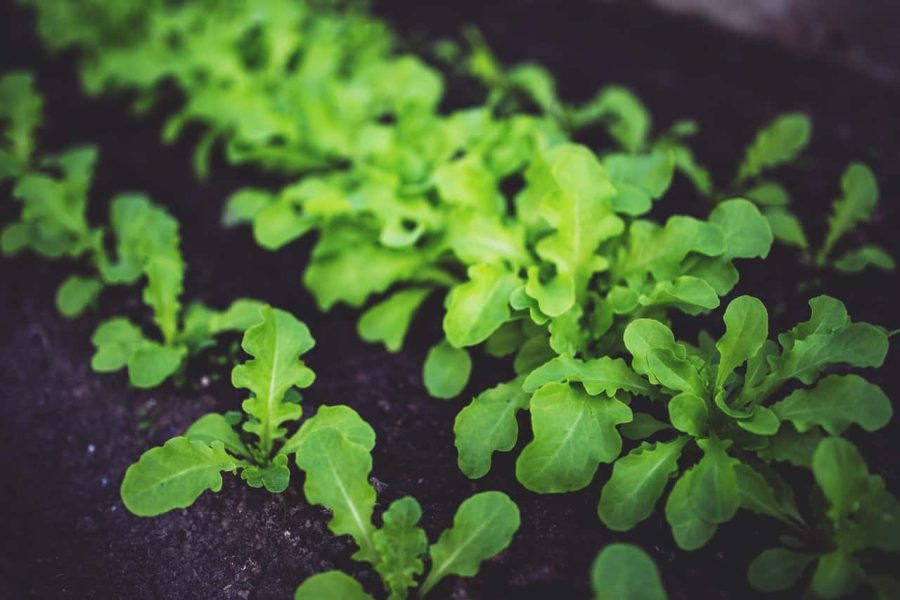
What Fall Vegetables to Grow?
Now that we understand the importance of forward planning, we need to consider the different varieties suitable for fall vegetables. Furthermore, you may freeze most vegetables very successfully, which means that you can enjoy your own vegetables at Christmas!
We have compiled a list of vegetables particularly suited to a fall harvest. However, if you have other varieties that have proved successful for you, then leave a comment in the box below and share your experiences with us.
RELATED READ: Ball Complete Book of Home Preserving
Broccoli
Broccoli loves the cooler temperatures of fall and may prove a successful crop to add to your list of fall vegetables. Broccoli can tolerate mild frosts, and the florets may stay fresher for longer during the colder weather. This gives fall planting a distinct advantage over spring planting where the young remain sensitive to sudden dips in temperature and frost.
Furthermore, the cooler weather will delay the broccoli plants from bolting and sending up flower spikes. Consequently, the maturing trees of delicious broccoli will last longer, allowing for a prolonged harvest.
It is worth noting that broccoli can take several months from planting to maturity, so it is worth planning this crop well in advance.
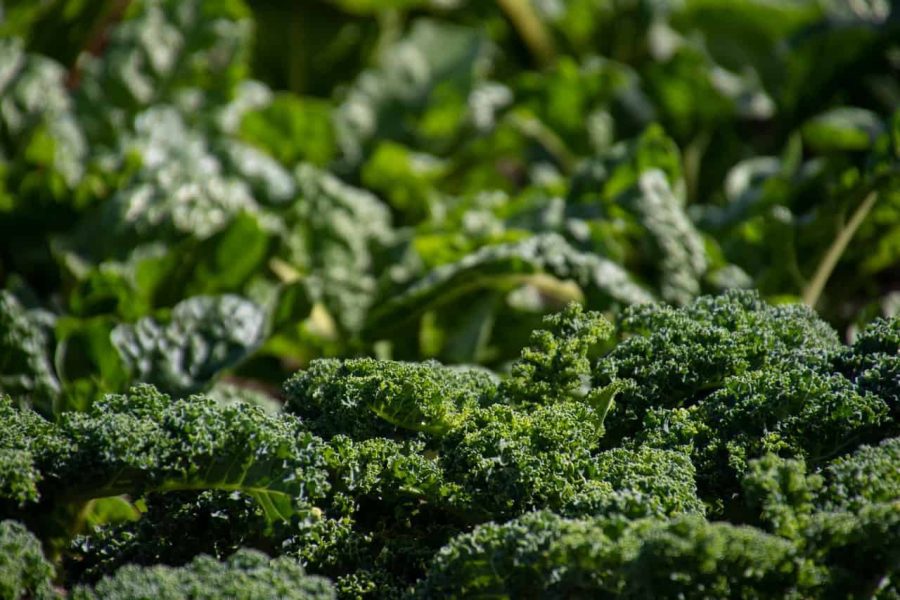
Beetroot
Who doesn’t love those sweet, plump globes of tangy goodness? Roasted or pickled, beetroots form a delicious part of our fall vegetables extravaganza.
Most root vegetables perform better if sown from seed because you don’t want to damage the roots when transplanting. The crop comes from the root, so you must maintain an excellent root system.
Summer heat tends to make beetroot woody and tough. Therefore, beetroots are inherently suitable for your crop of winter vegetables.
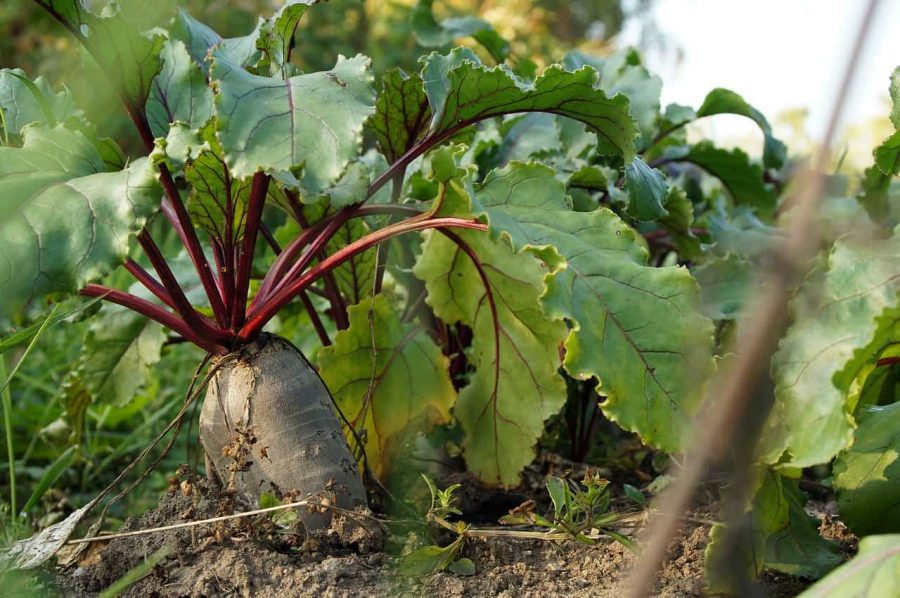
Bok choy
Many types of Asian greens prove suitable for fall vegetables, and bok choy remains an excellent choice. This variety of leafy green vegetable grows quickly and stays compact. Consequently, they make for an ideal filler in the garden and an incredibly successful vegetable for succession planting.
Bok choy thrives in colder weather, making it eminently suited for fall growing. Also, you will find fewer pests hungry for your vegetable leaves in the fall, and bok choy will reward you with a full, delicious harvest for it.
Cabbage
Cabbages relish the cooler weather because the lower temperatures allow for the cabbage head to form. Consequently, the cabbage is fuller and packed full of delicious leaves. Also, with fewer insects to worry about in the fall, your cabbage should remain intact, without all those annoying holes and half-eaten leaves.
These fantastic globes of goodness take approximately 3 to 4 months to mature. Therefore, it is essential to forward a plan to include them with your fall vegetables. Furthermore, the flavor of the cabbage will improve when grown through the fall as the cabbage will mature slower than in the summer months.
Additionally, cabbages will not fall foul of the frost. In fact, they will remain fresh and sweeter after a little frost. As a result, you may continue to harvest cabbages well into the winter, given a bit of protection against the harshest weather.
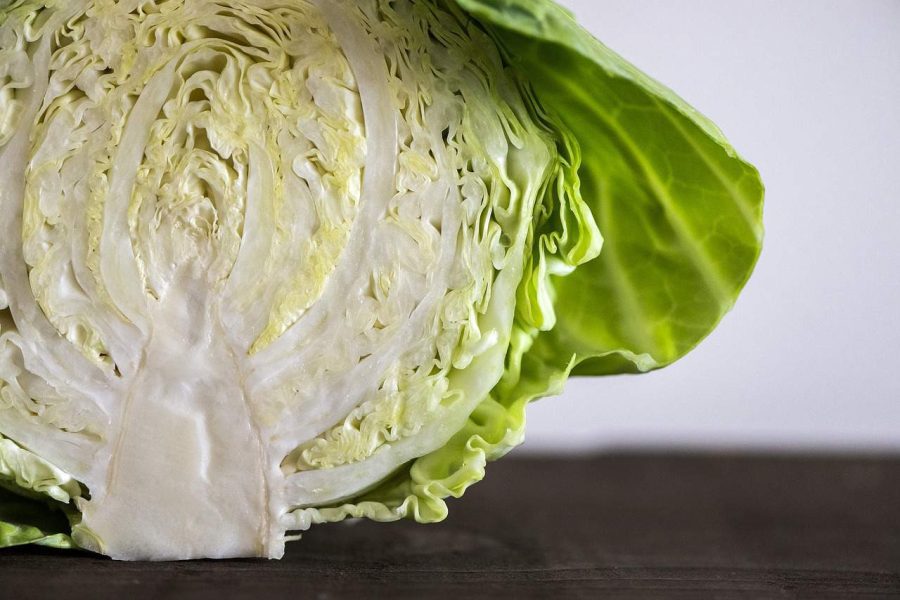
Bush beans
Pole beans need time to develop their vines before they start to crop. Therefore, it is necessary to choose other varieties to include with your fall vegetables. Beans that form compact, bushy habits will mature quickly and crop quickly, making them superb candidates for fall planting.
Beans remain susceptible to frosts. Consequently, you may wish to use a frost blanket to protect them while you wait to harvest the last crop.
Carrots
Carrots are slow growers. However, fast-growing varieties of carrots such as ‘Short and Sweet’ and ‘Solar Yellow’ prove eminent candidates for your choice of fall vegetables.
Alternatively, you may wish to consider growing your fall carrots in containers. Ensure you use long, deep planters to encourage healthy roots, as it is the roots you will harvest.
Kale
Kale remains one of the easiest crops to grow because it loves the warm moist soil. The leaves resist light frosts and allow for more extended harvesting periods. Mid-summer is the ideal time to plant your seeds in trays ready to transplant in late summer and early fall.
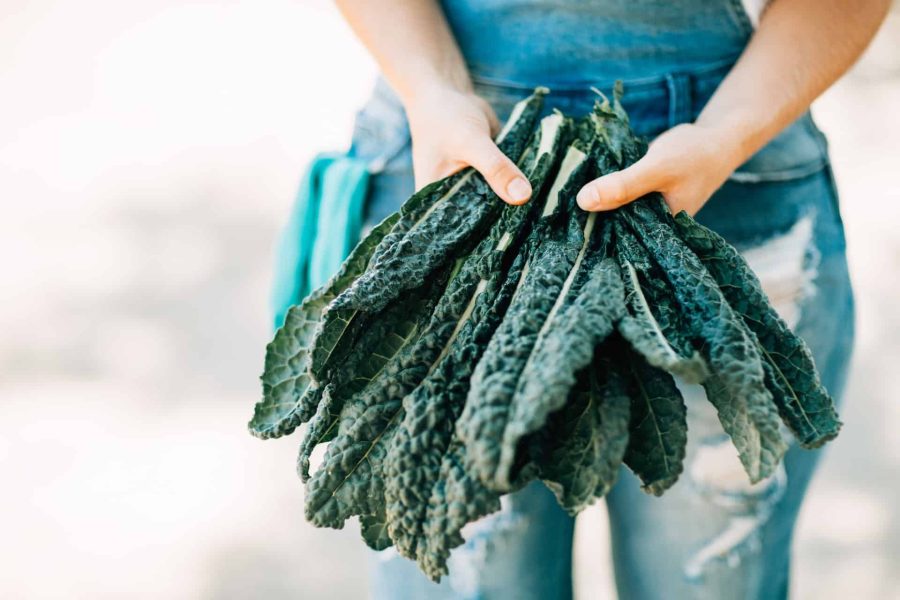
Cauliflower
Cauliflower remains such a versatile food and should form a part of your plans for fall vegetables. Furthermore, the cool temperatures of fall allow for more considerable, tighter growth of the cauliflower head.
The best results come from plants grown in pots. Transplant them into their final position in late summer to enjoy a fall filled with tasty white florets.
It is worth noting that you may wish to protect your cauliflowers beneath a mesh in case any worms persist and attack your plants.
Lettuce
Lettuce remains one of those essential staples of our diets. Such an easy grower, you may plant lettuce until the first hard frosts hit. However, the fall is ideal for growing lettuce because the leaves remain tender and sweet. Hot conditions tend to make the lettuce bolt and sprout flowers, which results in bitter, unpalatable leaves.
Most varieties of lettuce will mature in around fifty days. Therefore, lettuce remains perfect for succession planting. Lettuce will require protection against light frosts. However, planting crops in pots and moving them indoors will result in the ability to harvest lettuce well into the winter.
Peas
Peas are another easy vegetable to grow in our gardens, and the cooler conditions of fall make them particularly suited to your collection of fall vegetables. Like beans, choose varieties that form smaller, bushy mounds and will mature in around two months.
Peas like a lot of moisture, so ensure you water them well if the soil remains dry. However, the cooler weather of fall will encourage more flowers, and consequently, more delicious peas for you to harvest.
Spinach
Spinach is a delicious, versatile, and healthy vegetable that proves amazingly easy to grow. Healthy plants will reward you with an abundance of tasty leaves. However, the warm summer months may cause spinach to bolt quickly and produce flower heads, making the leaves inedible. Therefore, the cooler temperature of fall makes for successful spinach growing.
This luscious green is fast to grow and will reach maturity in approximately a month. Furthermore, by succession planting, you may enjoy a harvest of fresh spinach well into the fall.
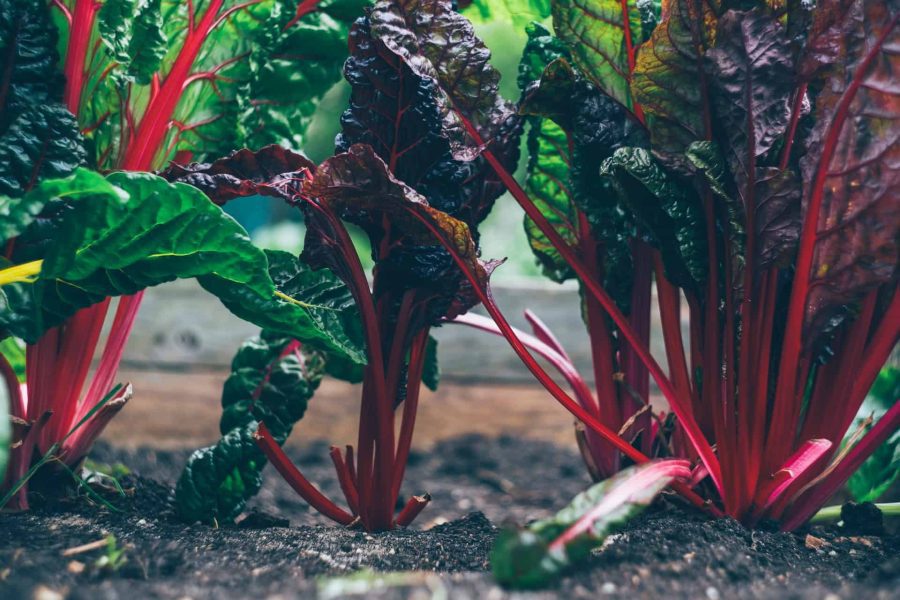
Fall Vegetables to Grow in Your Late Season Garden
Fall offers the perfect opportunity to prolong your growing season and extend your harvest to include fall vegetables. The cooler weather is a great advantage to growing many varieties of vegetables. Also, with fewer pests to contend with, fall growing offers the chance to develop those varieties susceptible to summer blights.
With a little forward planning and successive planting, you may continue to grow and harvest vegetables when the first frosts start to hit. Furthermore, some crops may even last into the winter.
If you have any experience with fall vegetables, why not leave a comment below to bolster our knowledge of this fantastic growing season. We look forward to hearing from you.
Becky is a wildlife enthusiast and pet and livestock care expert with a diploma in canine nutrition. With over a decade of experience in animal welfare, Becky lends her expertise to Simple Family Preparedness through insightful info about pets, livestock, bee keeping, and the practicalities of homesteading.
Last update on 2024-04-20 at 10:09 / Affiliate links / Images from Amazon Product Advertising API



